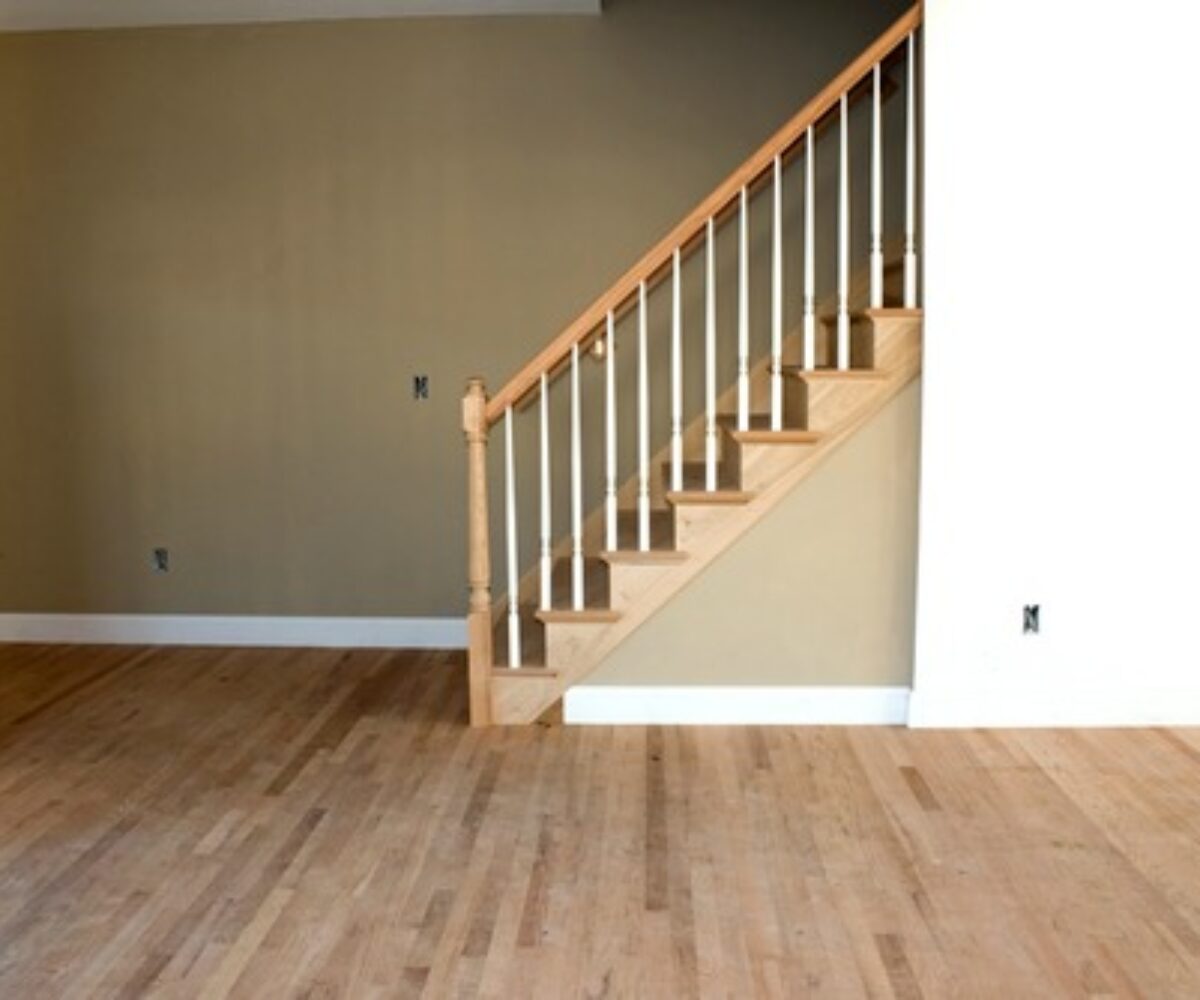Finishing Your Basement? Here are 8 Stairwell Dos & Don’ts
While the basement stairwell may be easy to overlook, consider that it is the first thing anyone will see when entering the basement. In terms of function and design, the stairs that access the basement are actually one of the most important elements of a finished basement and the design options are endless. What type of steps? What will the railing look like? Will there be a door? What can be done with the space under the stairs? Your residential basement finishing company can help navigate those questions and ensure an excellent result.
Here are some dos and don’ts to consider when choosing the stairwell for your finished basement:
1. DON’T make your stairs too narrow.
The minimum width for stairs is 36 inches with 42 inches being the standard. Depending on the situation, going as wide as 48 inches may be appropriate. Wider steps at the bottom add a dramatic flair to the basement entry. Keep in mind how the stairs will be used. Will someone likely be going up while someone else is going down? Will you need to carry heavy or awkward objects such as furniture up or down the stairs? Narrow stairs are also a fire hazard.
2. DON’T have stairs that are too steep.
The measurements of “rise” (the vertical distance from the top of one tread to the top of the next tread) and “run” (the horizontal distance from the face of one riser to face of the next riser) impact both comfort and safety.
3. DO provide plenty of headroom.
All staircases should have a minimum clearance of 6 foot 8 inches.
4. DON’T forget to follow local building codes.
Building codes typically allow for a range of measurements for staircase width, riser height, tread width and headroom and may include specifications for railings. Be sure to check the codes before designing your staircase.
5. DO choose a finish material that blends with its surroundings.
Remember that the basement stairwell is part of the overall design of the finished basement and should blend seamlessly with the rest of the decor.
6. DO make sure you have proper lighting.
Basements often don’t have much natural light and the stairwell can be especially dark. Install sufficient lighting to keep the stairs visible and safe and locate controls at both the top and bottom.
7. DO add a stair railing.
Railings are a necessary safety feature but they can also enhance the look of the staircase. Railings can be made from a variety of materials in virtually any style. Consider matching the railing to the balusters and trim.
8. DO utilize the space under the stairs.
The area under the stairs is the perfect spot for extra storage, a nook for a desk or a display area for a prized collection.

